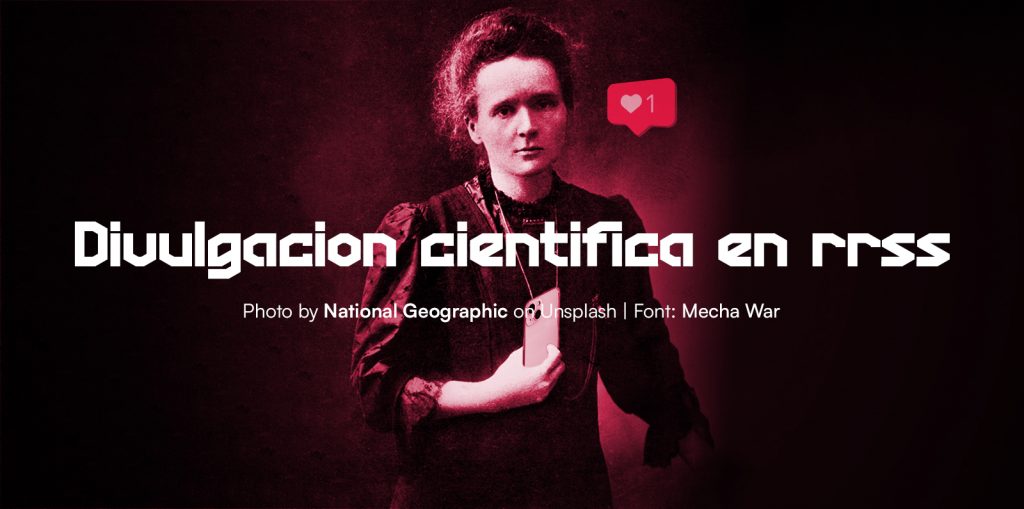Social media is like the jungle of the Internet: it has everything, from funny memes to people trying to sell you strange products. But, in the midst of all that chaos, there’s a perfect opportunity for scientific outreach.
Imagine if Galileo Galilei could have shared his discoveries about planetary motion on his TikTok account. He would have surely gained millions of likes! And if Newton could have tweeted about his universal law of gravitation, he’d have lots of likes but also some haters (hates gonna hate).
There are current cases of scientists using these platforms for scientific outreach, such as the scientist and streamer Sherezade. This scientist currently lives in Berlin and works in postdoc research in the field of immunology and allergies.
On Twitch and YouTube, you can see her explaining current news about science and research in an engaging and straightforward way, and she even participates in Squid Craft 2!
For Sherezade, the important thing is not just to “do science” but to make it accessible to everyone, no matter the channel used. We completely agree with her.
We have similar cases, such as Deborah García Bello, also known as DeborahCiencia. In addition to her well-known outreach work (television, radio, literature), she is part of CICA, in the Reactive Chemistry and Photo-reactivity React research group.
You can also find Carlos Santana Vega, a computer engineer and data scientist, who speaks from his YouTube DotCSV channel.
What we like about Carlos is his special ability to make complex concepts easy to understand, even for those without a background in computer science or data science. He’s a very entertaining speaker, and his videos are visually appealing, making them even more enjoyable to watch.
Carlos also shares interesting posts on LinkedIn about technology, machine learning, and data science. So, if you’re an avid LinkedIn user and a tech lover, you definitely should follow him! He’s the perfect combination of genius, entertainment, and communication skills. Get ready to learn, laugh, and be amazed all at once. It’s like having a rock concert of data science in your own home!
We not only find these cases, but there are a large number of scientists who use new digital dissemination tools to make science accessible to everyone. Here’s a shortlist of some more:
-
- Mario Peláez, also known as Sassy Science, the first “drag queen” who promotes science; the blog of La ciencia de la mula Francis, the YouTube channel of La gata de Shrödinger, where she discusses science with a skeptical perspective and a touch of humor, and for short videos, her TikTok.
- Javier Santaolalla, a particle physics doctor with three YouTube channels and an account on TikTok.
- Patri Tezanos, a graduate in Psychology, a Communication major, and a master’s in neuroscience. This neuroscience specialist combines her online activities with research work at the Instituto Cajal del CSIC.
- Iganacio López-Goñi, a microbiologist, combines teaching and research at the University of Navarra with scientific outreach through his blog “microBio” and his Twitter.
Here’s the translation of the provided content while preserving the HTML structure:
html
Copy code
- Iganacio López-Goñi, a microbiologist, combines teaching and research at the University of Navarra with scientific outreach through his blog “microBio” and his Twitter.
- José Luis Crespo is a physics graduate who creates scientific content on YouTube on the QuantumFracture channel. He combines science and animations, making his videos super dynamic. You can also follow him on Twitter, Instagram, and Facebook.
- La Hiperactina is a scientific outreach channel that explains topics about biomedicine and the human body, such as what cancer is, how HIV/AIDS works, or the effects of space on the body. Behind this channel is Sandra Ortonobes, with a degree in biomedical sciences, so she explains genetics, microbiology, immunology, etc., with rigorous information accessible to everyone. You can also find her on TikTok and Twitch.
- Mónica Blanco holds a doctorate in chemistry and is a scientific communicator. In her YouTube channel, she shares scientific knowledge in a simple, didactic, and engaging way. She also uses other social media platforms for scientific outreach, including TikTok, Facebook, Instagram, and Twitter.
- Eduardo Sáenz is the creator of Derivando, a YouTube channel that makes mathematics more accessible to everyone from a dynamic perspective that makes them more attractive. This mathematician already has 1.4 million subscribers. You can also find him on Twitter, Instagram, and Facebook.
- MAth4all is a mathematical outreach channel on YouTube created by Adrián García. He has also created a website where you can find educational materials and articles. Here, you can find mathematics for everyone.
- Unicos is an initiative that helps millions of students prepare for subjects through online education. On their website, you can find assistance with subjects like mathematics, chemistry, physics, and more. They also help adults over 25 gain access to university, assist those over 18 in obtaining their high school diploma (ESO), and prepare for access to intermediate degree programs for those over 17. You can also find them on YouTube, Twitter, Facebook, and Instagram.
- Los mundos de Brana is the blog of Laura Morrón, a physics graduate. She is the editor and director of the El Café Cajal collection, through which she transmits science in books. She also shares her passion for science through her blog and collaborations with other media and projects. She is the author of the book “A hombros de gigantas,” a tribute to all the women who made scientific progress possible as we know it today. You can find her on social media, including Twitter and Instagram.
Social media is an excellent way to make scientific knowledge visible and reach a wider and more diverse audience. Use them to share your work and your passion for science! And if you’re wondering if science and marketing are related, check out our post.




